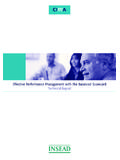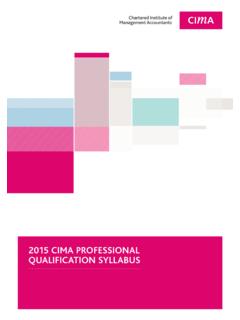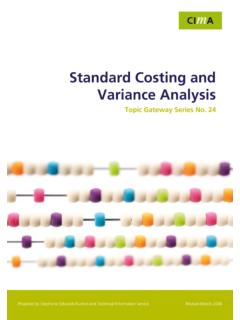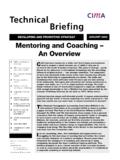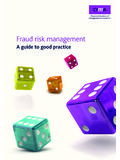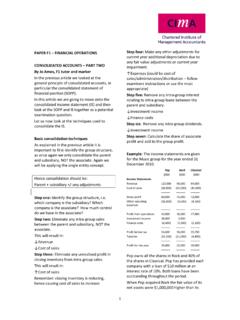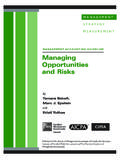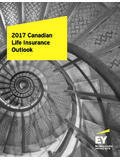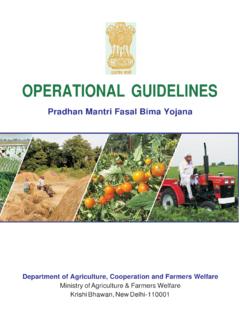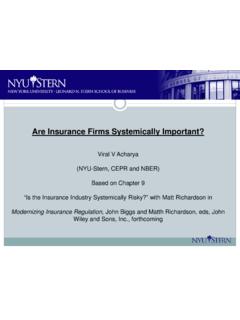Transcription of Financial Management | June 2014 43 ReSouRce
1 Study notesSTudy & Tech noTeS/The inSTiTuTe/evenTSReSouRc e43 Financial Management | june 2014In this issue Paper C03 Fundamentals of Business Mathematics, p46 Paper F3 Financial Strategy, p48 The economic substance of assets and liabilities, rather than their legal form, is what an accountant must focus on when deciding how to record them in the Financial statements, but this is not always straightforward By Jayne HowsonPapers F1 and F2 Financial Operations and Financial Management The term substance over form is fundamental to our understanding of how Financial state ments are produced. It s essential for students studying for the papers testing Financial reporting principles to understand the concept and how to apply it.
2 The term means that an entity s trans actions are recognised according to their economic substance rather than their legal form in order to present a true and fair view of the performance and position of that entity. Those preparing accounts will have to use their judgement in order to show the business sense from the transactions and to present them in a way that best reflects their true essence. The syllabus for both F1 and F2 refers to the understanding of substance over form and the concept s application to a range of situations. Students should be able to define and apply the principle to determine the correct accounting treat ment in exam any question requiring you to de termine the substance of the transaction, the starting point will be the elements of Financial statements in particular, the definition of assets and liabilities given by the International Accounting Standards Board (IASB).
3 If one side of the transaction meets the definition, the presentation, recognition and measure ment of that transaction will be estab lished in accordance with its substance. An asset is defined as a ReSouRce con trolled by an entity as a result of past events and from which future economic benefits are expected to flow to the entity . Note that there is no mention of ownership. The term controlled sug gests that the entity may use the asset as it pleases, but does not have legal liability is defined as a present obligation arising from past events, the settlement of which is expected to result in an outflow from the entity of resour ces embodying economic benefits . It may take one of the two following forms:l Legal ie, meeting a contractual com mitment such as a loan Constructive ie, the entity creates an expectation that it will meet an obli gation because of its reputation.
4 For example, if a company renowned for Financial Management | September 201344its environmentally friendly policies were to pollute a river with chemical waste, there would be an expectation that it would make good the next stage is to consider some sit uations where the substance over form concept should be applied. Both F1 and F2 may require candidates to record a transaction in the preparation of finan cial statements for a single company or a group. In F2 in particular, a journal entry may be required in order to pro vide some explanation of the principles behind the s look at the five topics that are examined most frequently in this area: finance versus operation leases; redeem able preference shares; consignment stock; sale and repurchase agreements; and debt versus operation leasesA finance lease is one that transfers the risks and rewards of ownership of an asset from the lessor to the lessee.
5 This may be demonstrated by the lessee con tracting to lease the asset for most of its useful economic life and to pay for any maintenance and insurance. One that does not meet these criteria is an oper ating regard to the legal form, the asset belongs to the lessor in either regard to substance:l Under a finance lease the definition of an asset is met. The lessee controls the asset. The transaction will be recorded in the lessee s books as the acquisition of an asset with a corresponding obliga tion to pay the lessor. The journal would measure the transaction at the lower of the fair value and the present value of the minimum lease payments (Dr: Asset and Cr: Finance lease liability). l Under an operating lease there is no control of the asset, so the cash paid to the lessor will be treated as an expense with no obligation.
6 Redeemable preference sharesThis aspect is often examined and it s a common form of off balance sheet financing watch out for it in the 25 mark group accounts question in F2. In legal terms, a redeemable prefer ence share usually provides the holder with a fixed annual dividend calculated as a percentage of the nominal value. The term redeemable means that the capital, with or without a premium, will of delivery so that any price movements are the risk of the dealer?l Is the dealer unlikely to return the asset to the manufacturer on demand or at its discretion?If the answer to any of these questions is positive, the inventory is deemed to be that of the dealer on delivery to its premises. At this point the manufactur er is deemed to have made a correspond ing sale (Dr: Asset and Cr: Liability).
7 Sale and repurchase agreementsUnder these deals, an entity that requires finance transfers the legal ownership of an asset to a finance provider in return for cash and a promise to buy the asset back at a set date. This may apply to land and buildings or inventory that requires time to mature before it can be sold. The asset legally belongs to the finance provider until the money has been re funded. If it s highly probable that the asset will be repurchased, this is a secured liability in substance, because the risks and rewards of the asset will continue to rest with the entity. The accounting treat ment is to keep the asset in the books of the entity (Dr: Cash and Cr: Liability).Debt factoringThis method of raising finance occurs when an entity transfers the responsibil ity for collecting receivables to a finance provider in exchange for cash.
8 Such deals may vary widely in practice, but F1 and F2 examine the following two forms:l With recourse where the finance pro vider has the right to ask the entity to compensate it for any receivables that it s unable to Without recourse where the finance provider takes full responsibility for the collection of receivables from day legal terms the receivables are the responsibility of the finance provider in both situations. But in substance the with recourse variant means that the entity carries the risks of non payment by customers. Therefore the asset re mains in the entity s accounts until the finance provider releases the obligation to refund the shortfall. The cash trans ferred is treated initially as a loan and the journal entries would be as for a sale and repurchase Howson is a freelance lecturer specialising in Financial manage-ment, reporting and taxation be repaid to the shareholder at a set date.
9 This makes its substance that of a loan, because there is an obligation to repay the equivalent of principal and interest. On initial recognition, the transaction is valued at proceeds received (Dr: Cash and Cr: Liability). Subsequently the loan is measured at amortised cost using the effective interest rate. This means that dividend payments are treated like interest for a loan and the amounts payable, along with any other servicing expenses, are recorded in the income statement as finance stockConsignment stock is inventory legally owned by one company (the manufac turer) but kept on the premises of an other (the dealer). In past papers this has been examined using the case of a car maker transferring stock to a dealer.
10 The question is: in substance, whose inven tory is this? You will need to reconsider the definition of an asset and establish where the risks and rewards of owner ship lie. Numerous questions need to be asked here, some of which are as follows: l Are insurance, servicing and repairs the responsibility of the dealer?l When the dealer eventually buys the asset, has it fixed the price at the point 44 Financial Management | june 2014 Test your understandingThe following question is an edited extract from November 2011 s F2 paper. A model answer will be published in the version of this article that will appear in june s FM app, which can be downloaded free to most mobile 31 May 2011 DRT sold land to a provider of long-term finance called NKL for $1,600,000.

